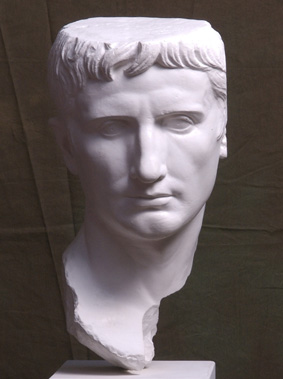
Augustus, who was in power from 27 BCE to 14 CE, brought an end to the Roman Republic and established the Empire by consolidating power in Rome and himself. Portraiture was a crucial part of this process. It gave his new position a public face. But what should Rome’s first ‘princeps’ look like? His image had to appear sufficiently different from the rest of Rome’s marble elite and yet not so arrogant that people would be incited to dash it to the ground.
The answer lay, as can be seen here, in a blending of Roman portraiture with idealised Greek sculpture. It was a formula that was to shape the appearance of Rome’s emperors for centuries to come
Baltimore, Walters Art Gallery, 23.21
Transferred from the Archaeological Institute of Göttingen University in August 1991
Verzeichnis der Gipsabgüsse des Archäologischen Instituts der Georg-August-Universität Göttingen, 246, no.A1322
Handbook of the Collection of the Walters Art Gallery, 39
